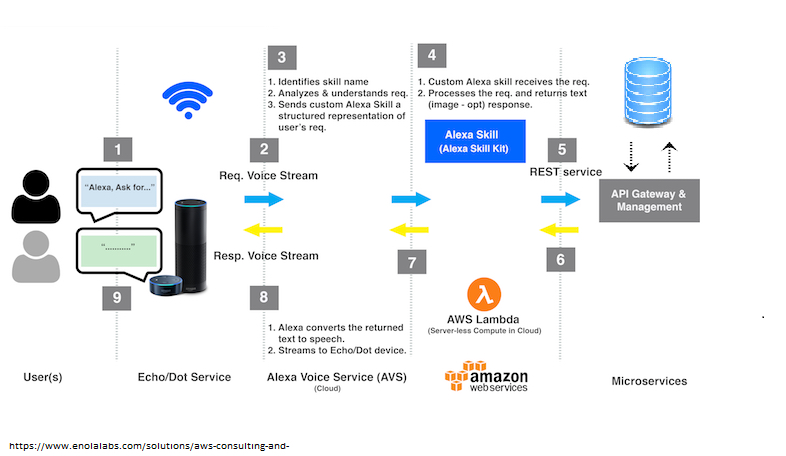3: IoT Methods and Architecture - GharbiRaouf/hhz_hackathon_alexa_coffee GitHub Wiki
Hackathon
Our project was developed in the course of an IoT-Hackathon at the HHZ Research Center in Boeblingen, which took place for two days where students worked intensively together. Cooperation with students of another team who worked on similar projects helped to find solutions to common issues more quickly.
Living Lab
The project was part of a living lab. The ideas behind this research method is user-centric, experimental research and the exploration of new ideas.
Co-Creation: During a brainstorming session, we designed a Value Proposition Canvas visualizing three digital services incorporating Alexa. The services are based on real-world problems, found in university context.
Exploration: After creating the Value Proposition Canvas we designed the MVP and started experimenting with Alexa skills. Is this phase we set up a test environment capable to operate with Amazon echo.
Experimentation: As part of the living lab the service has been implemented to a ready-to-use state at the HHZ. The service was fully implemented and ready to be tested by external users. All results have been presented to all the hackathon teams at the end of the second day.
Evaluation: After an adequate test phase an evaluation by students and personnel of the HHZ would be possible in order to assess the service and decide on a long-term usage in the facility. Improvements would lead to another cycle in the living lab process.
IoT Design Principles
The goal is to find principles that manifest common methods and behaviors across various applications, to use and validate them. Upon the design of the architecture the following IoT design principles were implemented:
Invisibility: The infrastructure behind Amazon echo is not visible to the user. No interaction (UI) with any of the other components is need from a user perspective.
Manual override: The user initiates a predefined process by asking for the coffee machine. A manual override is not available in this case.
Feedback: By asking Alexa for coffee an instant response is given. The user also gets feedback if the question did not contain the required the invocation name to start the Alexa skill. In this case examples of available Alexa skills are given.
Architecture
 Image source: https://www.enolalabs.com/uploads/blog_images/Sample_Amazon_Custom_Skill_Architecture.png
Image source: https://www.enolalabs.com/uploads/blog_images/Sample_Amazon_Custom_Skill_Architecture.png
To start the process of acquiring a service from the smart home device Alexa the user is starting a pending request in the form of a predefined command already set in the echo/dot service by asking « Alex, Ask for … » The request is being transmitted vocally from the user into the receiver of the device.
The request voice stream is being transmitted to AVS known for Alexa Voice Service AVS which first identifies skill name, analyses & understands the request then sends custom Alex skill a structured representation of the user’s Request.
After the treatment of the voice stream from the cloud, the request is forwarded to the Alexa Skill kit which handles and processes it then returns a text, image or an optical digitalised response to the Micro services controlled by an API Gateway & management.
The feedback is transmitted to the AWS Lambda which affords less computing in the cloud, the cloud converts then the returned text into a speech and streams it back to the Echo/Dot device via the Alexa voice services.
The Echo/Dot device rebuilds the stream into a response voice stream than forwards it back to the user.